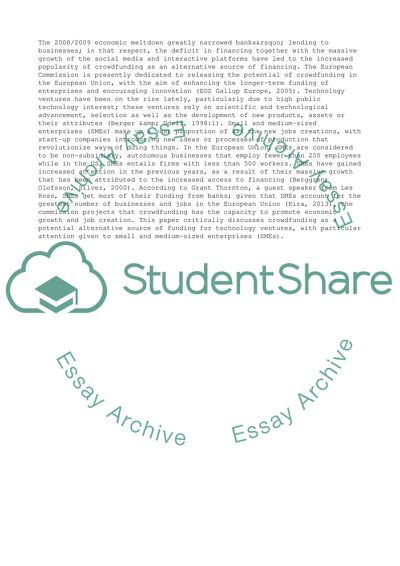Cite this document
(“Critically discuss crowdfunding as a source of funding for technology Essay”, n.d.)
Critically discuss crowdfunding as a source of funding for technology Essay. Retrieved from https://studentshare.org/business/1681677-critically-discuss-crowdfunding-as-a-source-of-funding-for-technology-ventures
Critically discuss crowdfunding as a source of funding for technology Essay. Retrieved from https://studentshare.org/business/1681677-critically-discuss-crowdfunding-as-a-source-of-funding-for-technology-ventures
(Critically Discuss Crowdfunding As a Source of Funding for Technology Essay)
Critically Discuss Crowdfunding As a Source of Funding for Technology Essay. https://studentshare.org/business/1681677-critically-discuss-crowdfunding-as-a-source-of-funding-for-technology-ventures.
Critically Discuss Crowdfunding As a Source of Funding for Technology Essay. https://studentshare.org/business/1681677-critically-discuss-crowdfunding-as-a-source-of-funding-for-technology-ventures.
“Critically Discuss Crowdfunding As a Source of Funding for Technology Essay”, n.d. https://studentshare.org/business/1681677-critically-discuss-crowdfunding-as-a-source-of-funding-for-technology-ventures.


